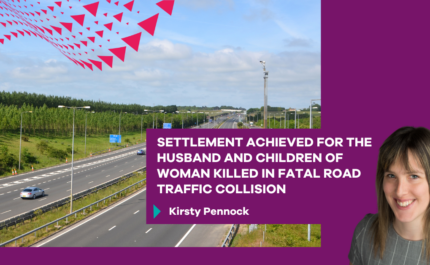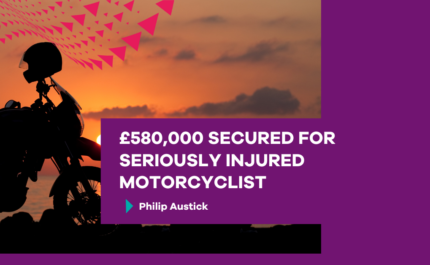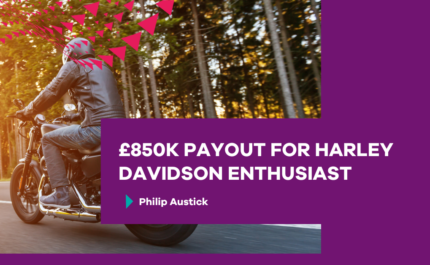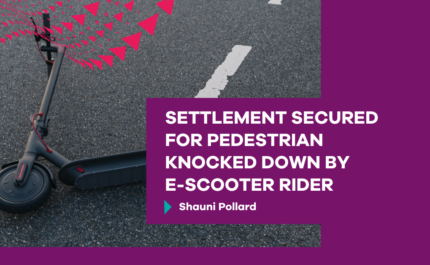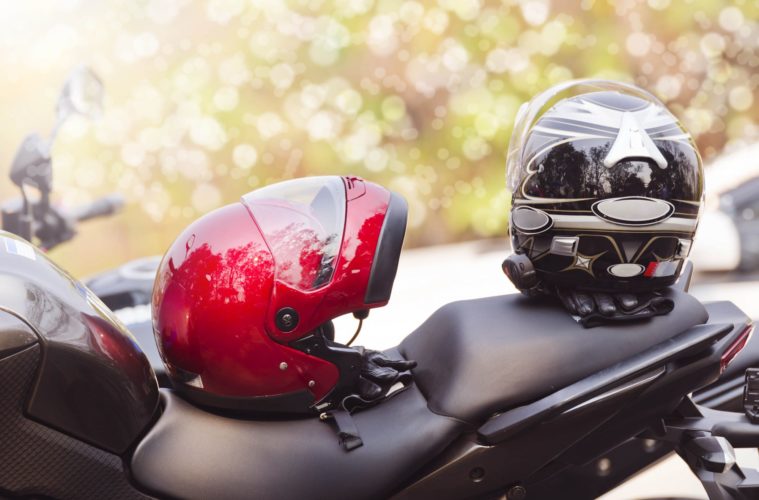
On September 4th 2018, the decision of one driver changed the lives of the Ethelston family forever.
On most mornings Mark Ethelston would have left for work on his motorbike at 5am to avoid the morning traffic, but on that Tuesday, he didn’t leave the house until 6am.
His wife was up too, helping his then 5-year-old daughter, and little best friend, Kyra get ready for her first day back at school after the summer holidays.
With the late start there was more traffic on the road, but it was a familiar route for him, one he’d travelled on plenty of times.
“I was coming down a road in Crystal Palace, called Central Hill,” he said. “It’s not a particularly nice stretch of road, a couple of bus stops, some side turnings, a lot of parked cars, so I am always particularly cautious around there.”
Mark was below the 30mph speed limit when he saw a car ahead of him edging out of a side turning to his left.
He held the horn on his bike and moved as far across as he could to the centre of the road.
“At the time I didn’t panic at all, I thought they should look, and they should definitely look when they hear the horn” he said.
“Then I just heard this almighty crunch and I look down and there was a car bonnet wrapped around my left leg, then there was a bit of handlebars, sky, road and the front of a van which it threw me into on the opposite side of the road.”
The collision had driven his femur bone through the back of his pelvis, causing a 5cm split through the ball of the femur.
It had also ripped the muscle from just below the knee to the top of his thigh from the bone and skin, which is known as an internal degloving.
“I went to move myself off the bike and realised I couldn’t move my legs at all and just panicked, I just screamed,” Mark said.
“Then all of a sudden, the feeling kicked in, the pain, and there was a real relief to feeling the pain, to know that there was some pain there.”
“A friend of mine was paralysed in an accident a year before, almost to the day.”
People from a nearby bus stop rushed to help Mark who was fully conscious and in a lot of pain.
He has since written to the two men who held his hand as he lay in the road to say a massive thank you for the support they provided him with.
“That relief came but then the pain was just intense, and the panic and the hyperventilating, and it seemed like an absolute lifetime before the police turned up and then the paramedics and the ambulance team,” he said.
Unable to get a helicopter to the site of the crash, paramedics transferred Mark to hospital in the ambulance.
“I don’t remember much about the ambulance trip to hospital but then it was just a series of being put on and off trollies, back and forth to CTs to MRIs to x-rays and just extreme pain,” he said.
In hospital, doctors and nurses attempted to reset the femur into the pelvis joint which had been destroyed.
“My God, I screamed,” he said. “That day will certainly stay with me.”
As he lay in the road following the crash Mark had made the decision not to call home.
He knew it would be about the time they were getting ready to leave for school and didn’t want to cause panic on his daughter’s first day.
So, for his wife the day still seemed normal, until two police officers knocked on her front door.
“The door was opened, and they said, do you know Mark Ethelston? Yes, oh my God is he dead?,” he said.
“They said he’s not, it isn’t life threatening, but it is life changing.”
Mark acknowledged while he had been through, and still has ongoing, treatment for PTSD, he couldn’t imagine the trauma that moment had created for his wife.
His wife and mother came straight to the hospital and could hear his screams of pain, as doctors attempted to reset the joint, before they saw him.
Almost two years on from the crash thinking about the moment he first saw his daughter again brings Mark to tears.
“I didn’t see my daughter for a couple of days,” he said. “I was desperate to see her, we’re very, very close.”
“She came around the curtain to my bed, normally she’d be running up to me and she just kind of hid behind my mum.”
“The nurses reassured her it was fine, of course I had oxygen and tubes, but they reassured her, and she came over and gave me a big hug.”
“It was tough, very tough that first time.”
Mark was in skeletal traction, where doctors had drilled through his leg and said it must have been a horrible sight.
For the next two months, while Mark was in hospital, Kyla would come to visit on weekends, and sit up on the bed with him to play games.
Recovery has been long and tough with the expectation he will only recover 60-70% of the function of his left leg if he is lucky.
He now has three custom titanium plates and seven screws holding the femur and pelvis in place.
In another five years he will require a full hip replacement, then again, every 20-years after that.
“I couldn’t move for days and days, it was bed baths and struggling to even wash myself. The first time trying to get out of bed and move I can’t describe the pain it was just horrible.”
For the next four months he was largely wheelchair or mobility scooter bound before working his way onto moving with crutches.
He still can’t wear tight trousers or jeans due to the sensitivity of his skin, struggles with severe pain if too much pressure is placed on the joints and occasionally his hip or knee will give way when walking.
“I am one of those characters who didn’t have to be pushed, I had to be reined in a bit,” he said.
“Every single thing they’ve told me to do, injury rehab yoga, injury rehab Pilates, gym every single day, going through all of the exercises, doing all of the upper body stuff I could do without any trouble, also pushing myself and pushing myself to build up the muscle wastage from the damage I had.”
“Everything I’ve been told will help; I’ve just put my all into it.”
The next step will be to have a spinal nerve block to help with the bulging disk in the right side of his back, but that won’t help with the pain in his leg.
He is also due to attend a 2-week residential course as part of the process towards getting a spinal cord modulator, which he is very nervous about.
Throughout his rehabilitation Kyla has been an anchor for Mark, even on the difficult and painful days he has tried to focus on the positives.
“Even through Covid, I’ve been homeschooling my daughter, and that’s an opportunity I would never have had if I had still been working,” he said.
“To be able to do that, to spend that time, that has been the chance of a lifetime. It’s been an absolute honour to be able to do that and be part of that.”
The family recently celebrated Kyla’s seventh birthday and are soon off on a daddy daughter summer holiday to France.
He said so many people are shocked to see him still smiling but to him “there’s no point in not”.
“If you do have something like this, then you do have to be grateful for the things you do have I suppose and just be happy about that.”
“Nothing really prepares you for it, you can’t quite comprehend what it’s like, you kind of block it out as something that happens to somebody else.”
Mark said for anyone driving on the road it was important to not take anything for granted.
“I’d never had any real major accidents on the road, until that day.”
“Just look and look again, you can never be too cautious.”
More than 60 people are seriously injured in a road traffic crash across the UK every single day, that means there are countless families going through what Mark’s family are, right now.
To find out more about Road Victim Month and follow the campaign click here.



